Human Conductor of Electricity
Ordinary people use standard electricity from the wall to powera light. Oh, but not you! Why use normal electricity from the walloutlet when you can […]
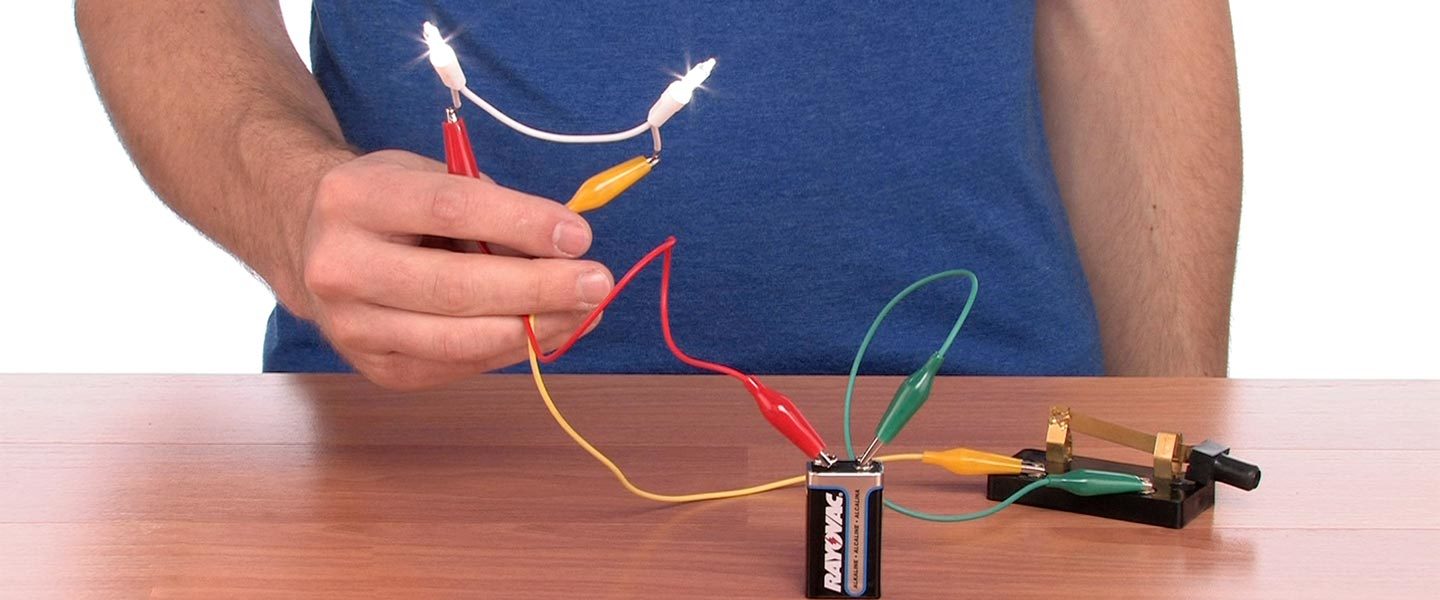
You enter a dark room and reach for a switch to turn on the lights. In fact, most off the time, you don’t even think about it; you just do it. Even in a widespread power outage caused by bad weather or someone’s goof with a machine, you say, “Holy cow, the power’s off!” What do you do then? You reach for a switch… it’s automatic. Electricity does work when it moves in complete circuits and this activity shows you how to build a simple one.
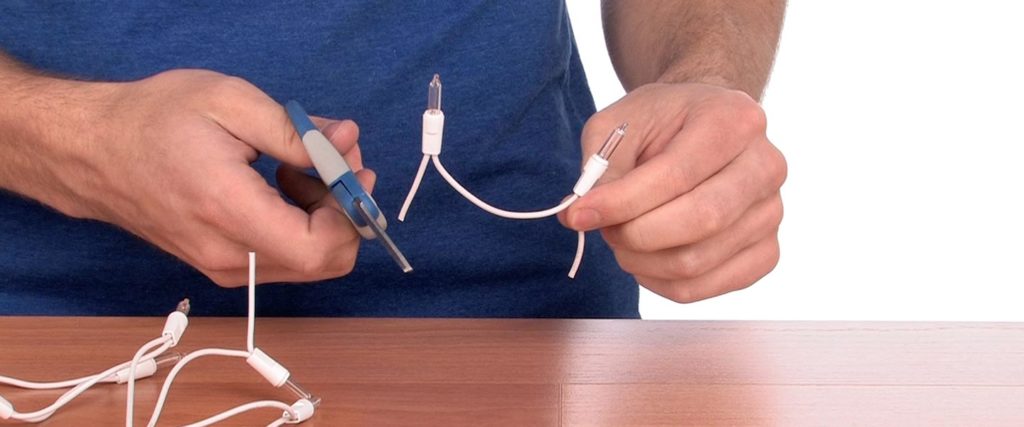
Test the old strand of decorative lights to be sure at least two in a row are working. Cut these two lights out of the strand. You want as long a wire as you can get on both ends of the lights.
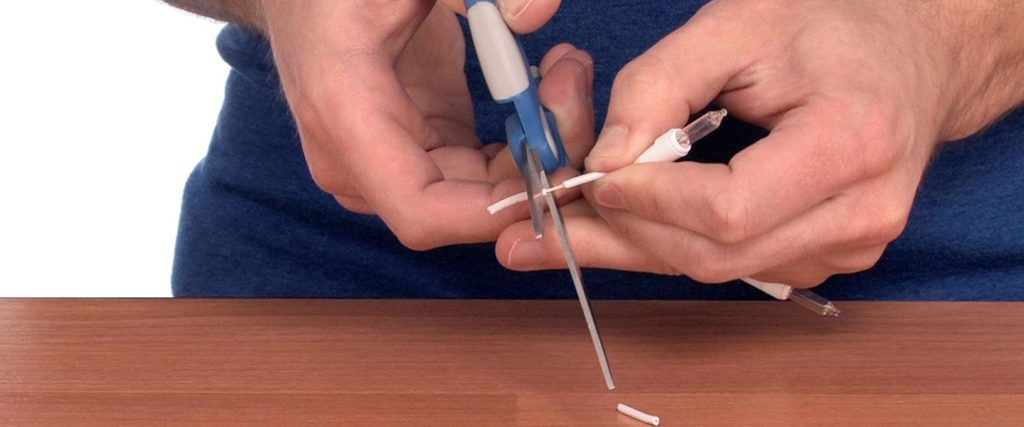
Use the scissors (or wire strippers) to remove about a half-inch (13 mm) of the covering on the wire on each end. You don’t want to cut the copper wire inside.
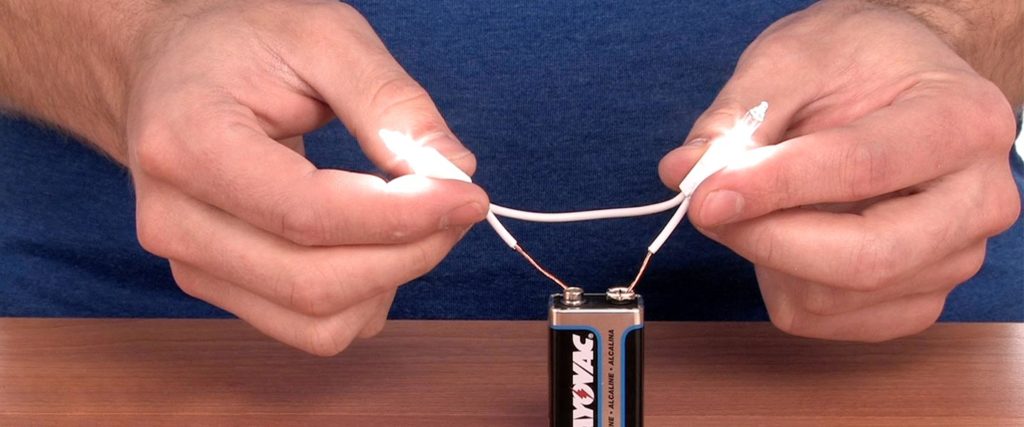
(This Step is called a “sanity check.”) It’s likely that the battery is good and that the lights work. Just to be sure, however, touch a bare end of the wire to each silver terminal (pole) on the battery. Yes! They light up nicely.
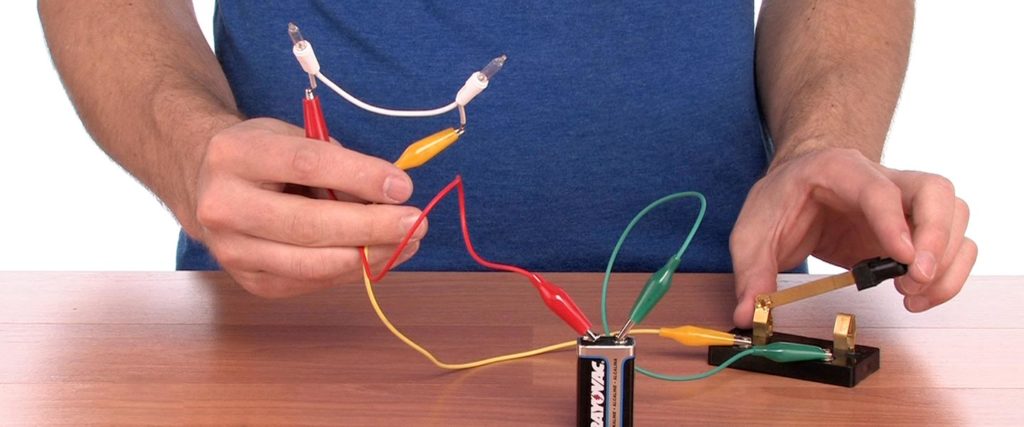
Make sure the blade on the knife switch is up (open) and attach an alligator clip to one of the terminals on the switch.
Attach the other end of the alligator clip to a bare copper wire on the light strand.
Attach a second alligator clip to the other bare copper wire on the light strand. What’s happening? Lights on? Not yet.
Attach the other end of the second alligator clip to one of the silver terminals (pole) on the battery.
The third alligator clip goes on the other battery terminal and then to the other terminal on the knife switch. Now the lights are on! Right? Oh? Not yet?
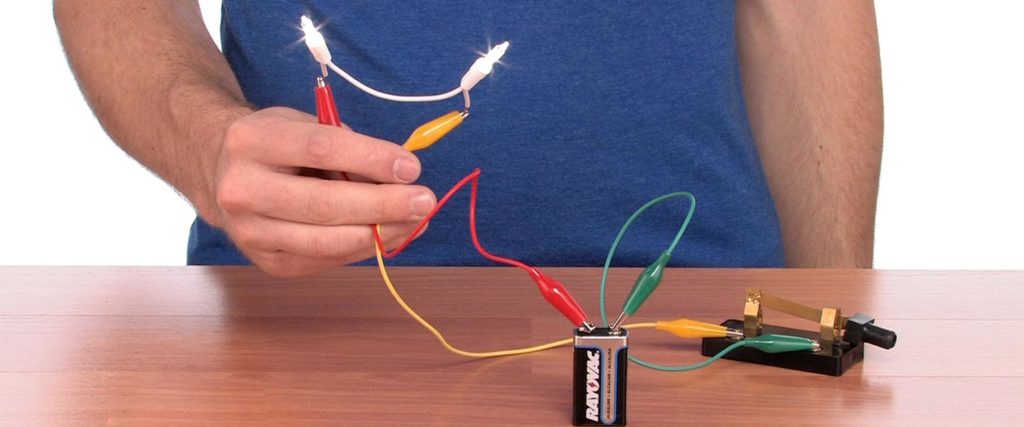
Close the knife switch and – finally – the lights are shining. You did it! The circuit is now complete.
You made a very simple circuit. There’s a push from a power source (the battery), a path for the electrons to follow (wires, lights, and a switch) and a final path back to the power source. The electron movement begins on the negative (–) pole of the battery. They get pushed through the circuit to the positive (+) pole by an electric field. Your job is to plan and build the circuit correctly so the current (moving electrons) can be used to do the jobs you want done along the way. In this case, the circuit was built to power some lights.
You used a battery in your circuit. There are many different kinds, shapes, and sizes of batteries but they all have the same purpose and two terminals. A battery’s purpose is to deliver moving electrons. The parts of a battery are designed to convert chemical energy into electrical energy so electrons can flow through a circuit. On one of the two terminals of a battery, there’s an excess of negative charges (–) while positive charges (+) come together on the other terminal. Electrons flow at tiny fractions of centimeters and are pushed through a circuit from the negative terminal of the battery to the positive terminal.
A switch is used to either block or allow the free movement of electrons in a circuit or to redirect their movement into another circuit or device. If the switch is open, there is no pathway for the electrons. If the switch is closed, the electrons can move through the circuit and do the work you have for them.
You have a very simple circuit but it works and the electrons are flowing and doing work. You can add more lights, more switches, and more alligator clips and you’ll make several discoveries along the way. There are limits to what one battery can do. The way you wire several circuits from one battery does make a difference.
Yes, you’ll be working with electricity and yes, as always, you’ll need to be careful using electricity. Don’t directly connect one terminal of the battery to the other terminal with the alligator clips or anything metal. Electrons move very quickly through the system this way. This is revealed as heat in the wire which can seriously burn fingers or cause a fire. It also drains the battery very quickly.